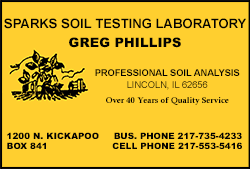|
 Three treatments have shown especially promising results in monkeys,
the researchers said. One, produced by tiny California biotech Mapp
Biopharmaceutical, gained international prominence this week when it
was given to two U.S. aid workers who contracted Ebola in West
Africa and have since shown signs of improvement. Three treatments have shown especially promising results in monkeys,
the researchers said. One, produced by tiny California biotech Mapp
Biopharmaceutical, gained international prominence this week when it
was given to two U.S. aid workers who contracted Ebola in West
Africa and have since shown signs of improvement.
Others are from Vancouver-based Tekmira Pharmaceuticals and
privately-held Profectus BioSciences, of Tarrytown, NY.
On Wednesday the World Health Organization said it would discuss
next week the ethics of using Ebola drugs that have never been
cleared for human use, wary of a long history of medicines being
tested on people who were never properly informed of the risks. In
the countries hardest hit by Ebola, suspicion of foreign medical
workers is already widespread.
But the health minister of Nigeria, Onyenbuchi Chukwu, told
reporters this week that he had asked U.S. health officials about
access to experimental Ebola therapies. U.S. drugmakers are fielding
questions from government officials about their ability to supply
treatments in sufficient quantities should the request come.

"For years we've told the government you need to invest a little bit
of money in this," said Profectus chief scientific officer John
Eldridge. "And now it's, 'Oh my God, how fast can you make this?'"
Officials at Mapp and Tekmira would not comment on efforts to make
their treatments available in response to the outbreak.
Speaking at a news conference on Wednesday, President Barack Obama
said he lacks enough information to green-light Mapp's drug to treat
the deadly Ebola virus and that the initial response should focus on
public health measures to contain the outbreak.
"We've got to let the science guide us, and I don't think all the
information is in on whether this drug is helpful," the president
said, adding that public health officials, in the course of
containing the current outbreak, could assess whether new drugs or
treatments can be effective.
"We're focusing on the public health approach right now, but I will
continue to seek information about what we're learning about these
drugs going forward," he said.
Dr. James Crowe, director of the Vaccine Center at Vanderbilt
University who has been developing an Ebola treatment similar to
Mapp's, said a Pentagon agency contacted him this week about his
work and added he will meet next week with government scientists
about accelerating his research.
MONKEY TESTS
No Ebola drugs or vaccines have even entered mid-stage human trials,
let alone been approved. The furthest along have been tested only in
monkeys and a handful of humans.
Mapp Biopharmaceutical began developing its ZMapp treatment more
than a decade ago. It consists of a cocktail of monoclonal
antibodies, proteins that are highly specific for the Ebola virus
and that are produced in bio-engineered tobacco plants.

In 2012 Mapp, working with scientists at the U.S. Army Military
Research Institute of Infectious Diseases (USAMRIID) in Fort Detrick,
Maryland, announced that when rhesus macaques received the cocktail
an hour after infection by Ebola, all survived. When they received
it 48 hours after infection, two-thirds survived.
Last year, ZMapp passed a stiffer test: monkeys that had been
infected with Ebola and developed fevers and other symptoms received
the intravenous cocktail 104 to 120 hours after infection; 43
percent recovered.
When the U.S. government decided to develop a contingency plan in
case of accidental exposure to Ebola by one or two people at a U.S.
research facility, it began storing a small amount of ZMapp,
according to a source familiar with the contingency plan. ZMapp was
chosen because the science is relatively easy to understand and the
risks considered relatively small, the source said.[to top of second column] |

The stock of Tekmira soared on expectations its Ebola drug might
speed toward approval due to the crisis, or even be used in the
current outbreak.
Under a $140 million contract with the U.S. Department of Defense,
it is developing a drug based on a genetic technology called RNA
interference. The idea is to take strands of genetic material that
are the virus's mirror image and, using nanoparticles, slip them
into cells where Ebola is replicating. In theory, the RNA disables
the virus.
In experiments by scientists at the army research unit, Tekmira
reported last November, most animals infected with lethal amounts of
Ebola survived when given the RNA product. The survival rate was 83
percent when the animals were treated 24 or 48 hours after infection
and 67 percent when they were treated 72 hours after.
"It is amazing how well that works in non-human primates," said
Ebola researcher Thomas Geisbert of the University of Texas Medical
Branch, who has conducted several studies of the company's drug in
monkeys.
HUMAN TRIALS
Last month, Tekmira announced that its early-stage human trial had
been put on hold by the U.S. Food and Drug Administration, which had
concerns about the drug's safety. Tekmira declined requests for an
interview.
Profectus BioSciences has also tested its Ebola vaccine in monkeys,
with good results, said Eldridge.
In a study with scientists at government biomedical research centers
and the Pentagon, Profectus found that a single intramuscular
injection protected all of the rhesus monkeys exposed to Ebola three
weeks later. The company hopes to launch a human trial to assess the
vaccine's safety within the next 12 months, Eldridge said.

An experimental vaccine similar to Profectus's, developed by
academic and government scientists, was rushed into emergency use
only once. In 2009 a scientist in Germany working with
Ebola-infected guinea pigs pricked her finger with a syringe
containing the virus. The vaccine was flown from Canada, one of the
sites where it was being developed.
"She got that vaccine in less than 40 hours and survived," said
Geisbert, though it's impossible to know whether that was because of
the vaccine. "She lived. That's all I care about."
With greater financial support, scientists said, Ebola treatments
could be ready for use sooner. For less than $10 million, said
Vanderbilt's Crowe, four or five of the experimental drugs could be
ready for testing within in four months.
All of them seem to be effective only in a small window after
exposure, however.
"Nothing on planet Earth is going to work if somebody comes in with
full-blown Ebola hemorrhagic fever and they are 24 hours or 72 hours
from death," said Geisbert. "The damage has been done."
(Additional reporting by Toni Clarke; Editing by Michele Gershberg
and Ken Wills)
[© 2014 Thomson Reuters. All rights
reserved.] Copyright 2014 Reuters. All rights reserved. This material may not be published,
broadcast, rewritten or redistributed.
 |